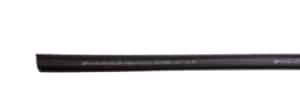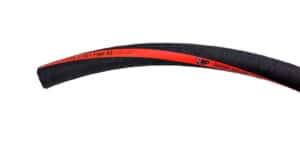Series 350/360 “Flex Acol” Fuel Hoses
Marine fuel fill hoses are specifically designed to handle the demands of marine environments, which include exposure to saltwater, sunlight, and vibrations. They are constructed with heavier materials and are designed to be more fire-resistant than automotive fuel hoses, meeting USCG standards and specifications. Additionally, they are also rated and approved for use in marine engine spaces, ensuring safe and reliable fuel transfer operations in a variety of marine vessels.
Why use marine grade fuel hose?
Marine-grade fuel hose is much heavier than the same inside-diameter hose as used in automotive applications. This is done as part of its fire or flame testing, a requirement under the regulations. All fuel hose used in engine room spaces on board gasoline-fueled boats must meet a 2.5-minute fire test rating.
Our marine grade fuel fill hose, used for the transfer of gasoline and other oils and fuels, offers excellent resistance to fire, heat, ozone and vapor permeation by alcohol blended gasoline and diesel fuels. Compounded to meet or exceed SAE-J1527 Type A, ISO/DIS 7840 and NMMA standards for fuel feed, fill and vent hoses. We offer the #1 choice for commercial and recreational boat and vessel builders.
UIP Marine Grade Fuel Hose Products:
TYPE A1 Marine Fuel Line – USCG/SAE J1527 & ISO 7840
Marine fuel line hose for fuel feed and vent applications on marine gasoline tanks. Designed for gasoline fuel feed and vent applications on marine boats and vessels. Meets U.S. Coast Guard and International Marine Certification Institute requirements for Type A1 service. Spiral synthetic yarn reinforcement. Synthetic inner rubber tube provides for high oil resistance.
MADE IN THE USA
Sizes: 1/4” I.D. – 5/8” I.D.
Temperature: 0° to 115°F
Tube: Black Nitrile Synthetic Rubber ARPM Class A (high oil resistance)
Cover: Black Synthetic Rubber
Reinforcement: Spiral Synthetic Yarn
Packaging: Bulk 200 foot Reels, 50’ and 100’ Punch-Out Cartons, Custom Cut Lengths
| ID (in) | ID (mm) | OD (in) | OD (mm) |
|
|||||||||
|---|---|---|---|---|---|---|---|---|---|---|---|---|---|
| 1/4 | 6.40 | 0.65 | 16.50 |
|
|||||||||
| 5/16 | 7.94 | 0.71 | 18.00 |
|
|||||||||
| 3/8 | 9.53 | 0.78 | 19.80 |
|
|||||||||
| 1/2 | 12.70 | 0.89 | 23.00 |
|
|||||||||
| 5/8 | 15.88 | 1.06 | 25.80 |
|
|||||||||
TYPE A2 Fuel Fill Hose – USCG/SAE J1527 ISO 7840
Marine fuel fill hose for marine gasoline tanks on inboard and outboard motors. This fuel line provides connection from a boat’s fuel fill port to its fuel tank. Meets Requirements for Type A2 service. Spiral synthetic yarn reinforcement. Synthetic inner rubber tube provides for high oil resistance.
Sizes: 1-1/4” I.D. – 2-3/4” I.D.
Temperature: -20° to 180°F
Tube: Black Nitrile Synthetic Rubber ARPM Class A (high oil resistance)
Cover: Black Synthetic Rubber
Reinforcement: Spiral-plied Synthetic Fabric with Wire Helix
Packaging: 50’ Coiled & Poly-wrapped, Punch-Out Cartons, Custom Cut Lengths
| ID (in) | ID (mm) | OD (in) | OD (mm) |
|
|||||||||||||||||
|---|---|---|---|---|---|---|---|---|---|---|---|---|---|---|---|---|---|---|---|---|---|
| 1-1/4 | 31.80 | 1.70 | 43.20 |
|
|||||||||||||||||
| 1-1/2 | 38.10 | 1.86 | 47.10 |
|
|||||||||||||||||
| 1-7/8 | 47.60 | 2.30 | 58.40 |
|
|||||||||||||||||
| 2 | 50.80 | 2.43 | 61.70 |
|
|||||||||||||||||
| 2-3/4 | 69.90 | 2.80 | 71.10 |
|
|||||||||||||||||



